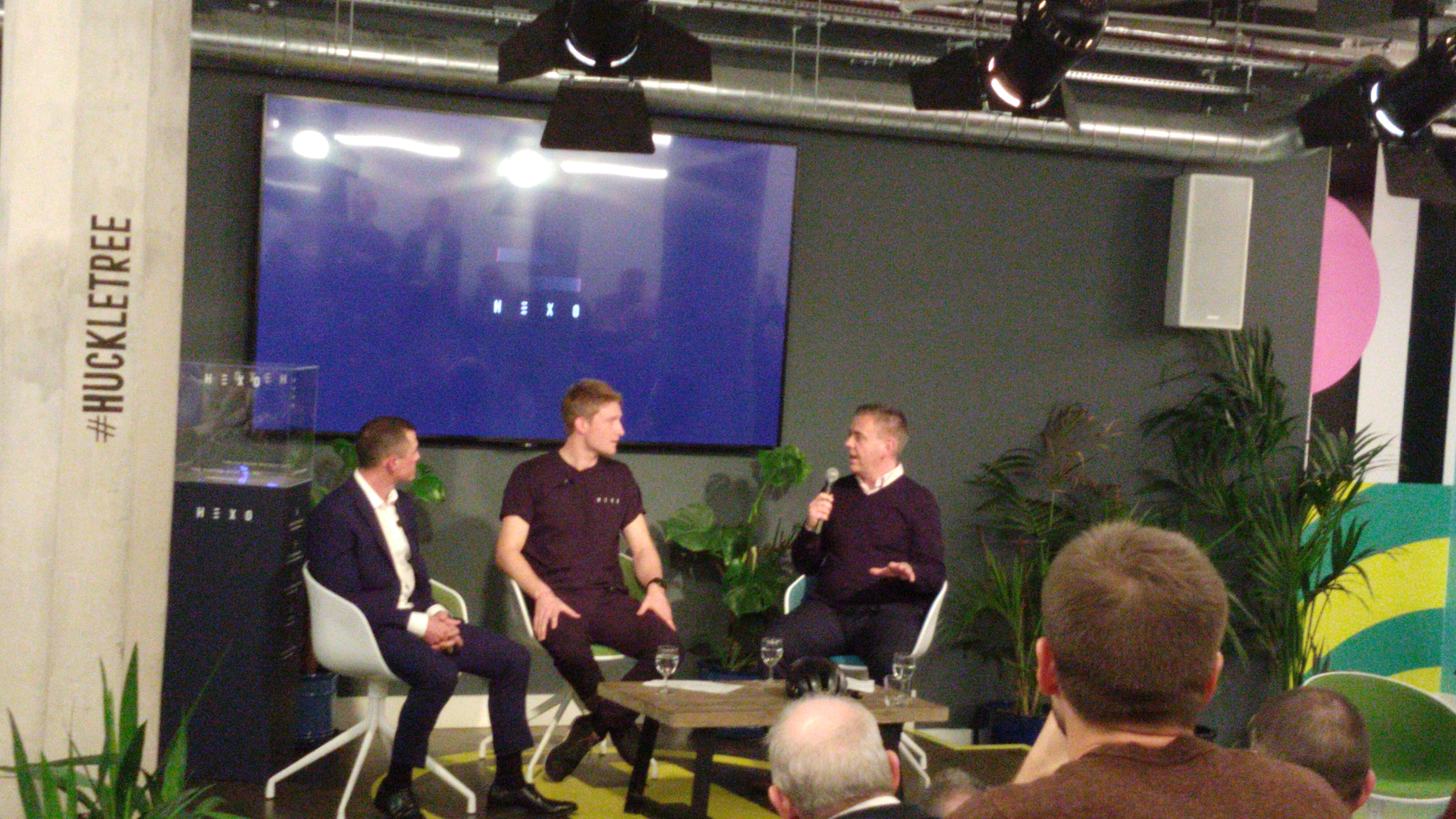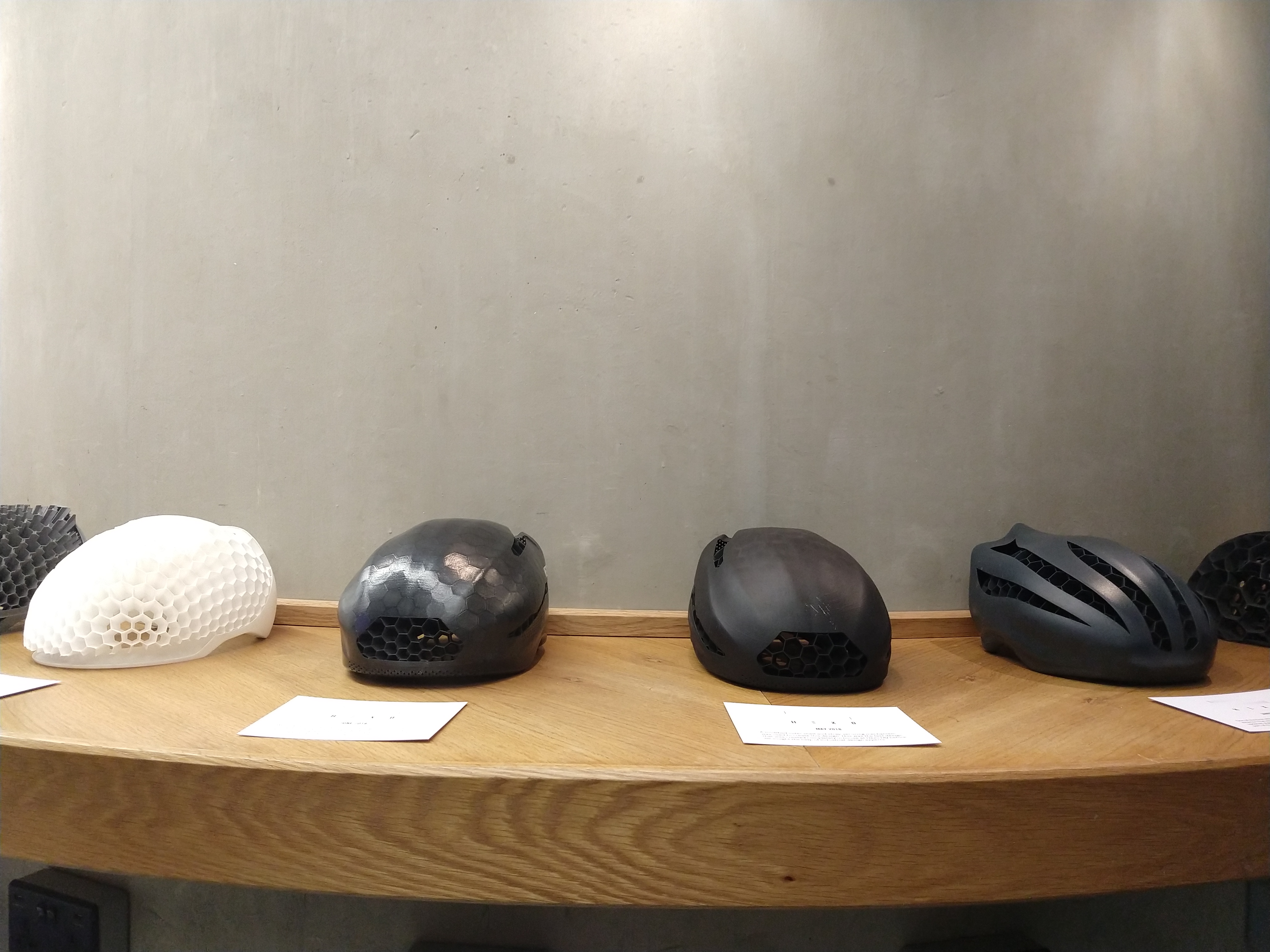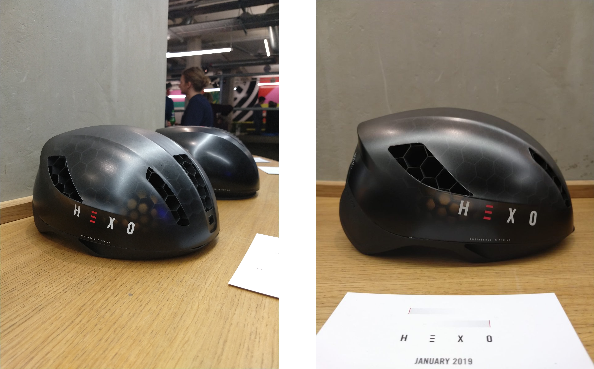Markus Glasser is the Senior Vice President (SVP) of leading industrial 3D printer manufacturer EOS, which has collaborated with UK-based Hexo Helmets to develop 3D printed bicycle helmets. Recently Glasser attended the launch event of the Hexo Helmets, held at the Alphabeta building in London, where we were able to talk and learn more about the 3D printed headgear.
Also attending the event were BBC broadcaster Simon Brotherton, and Australian former professional road bicycle racer Simon Gerrans, who is an investor in the helmet. The two held a discussion with Jamie Cox, CEO of Hexo Helmets, talking about the capabilities of this custom-fit headgear.
At the event, Cox said that “The breakthrough is in 3D printing, which has allowed us to create these complicated structures, because if you try and create a curved honeycomb structure you would have to distort the cells (of Polyamide 11), unless you 3D print it.”
After their discussion, we sat down with Markus Glasser to discuss the making of the helmets, the collaboration with Hexo, and the future of consumer-based 3D printing.

The advantages of 3D printing Hexo Helmets with P11
Integral to the structure of the helmet is its 3D printed honeycomb shell, which enables increased damage absorption compared to a flat surface structure. Glasser explained that the shell was 3D printed with Polyamide 11 (P11) using SLS. Only the top shelf of the helmet was not 3D printed. The Hexo helmets were produced by two manufacturing companies that have EOS 3D printers in-house,one located in the UK, and the other in Denmark.
“The benefit of 3D printing in general is that you can integrate functionality into the piece,” stated Glasser. “P11 offers a certain practicality. Hexo asked that the part should never ever break or splinter, and for this P11 is very good.”
Polyamide 11, which offers effective tensile properties, impact resistance and high fatigue, is derived from 100% renewable carbon resources. It therefore enables the production of commercial, environmentally-friendly functional parts with durable mechanical properties.
“Polyamide 11 is a green material, so aside from its mechanical properties, it can be really nicely recycled,” adds Glasser. “So this is one benefit. And then you have many applications in the sport industry.”
“In general, there is now a combination of polyamide 11 and consumer goods. So you’ll see in the next few years that the consumer market will grow significantly.”

EOS had an integral role in the development of the helmet. The company identified the P11 material as key to offering the desired properties for Hexo. “We work on solutions. we try to find a solution for a specific product and then the clients can decide, okay, this is my solution” commented Glasser.
“You have new materials which gives you further new applications and the consideration that you have different properties. Maybe very soft parts, very flexible parts, very stiff parts. So, it’s the materials that is very important. Also important is that we have our consulting team which can identify parts, which is now maybe done in conventional production. And then we can consult the cast and say look, this part would be super to build in 3D printing.”
Outside of the project with Hexo helmets, Glasser says material is something EOS is looking to continue working on.
“Material is key. Material is something we know we will develop more and more. In our ecosystem at EOS we have different material companies, where we work to power the companies in the material environment.”

Mass customizability for consumers
The Hexo helmet represents a consumer application of 3D printing. It is designed to fit each user’s head measurements precisely using the Hexo Helmets scanning app, offering mass customizability as well as protection for cyclists.
Though the company is not the first to produce a helmet in this way, Hexo does believe the product is a breakthrough specifically for cycle helmets. The traditional formula for cycle helmets “hasn’t been innovated for 60 years” claimed Jamie Cox at the launch event. “So the idea to try and use new technology to actually improve safety was really exciting for me.”
On the potential of the Hexo Helmet as a breakthrough for protective headgear, Glasser also added “I think this helmet application is a wonderful application for mass customization. I think this helmet is so close to all of us, and this is the nice thing. I think if you distribute it and you know everybody understands what a road helmet is, and then someone has different ideas, maybe different helmet designs for a different sport.”

Glasser was also keen on the adoption of 3D printing in general, regardless of the application. “The high performance and high quality elements will turn to 3D printing. This stance, in its simplest sense applies in general to technology. 3D printing offers high performance, high quality parts, independent of whether its a sport application, automotive application, aerospace application, they will not use very cheap, simple parts.”
He concludes,
“For high performance, high quality parts, the future for manufacturers is 3D printing.”
Is this your application of the year? Nominate EOS and Hexo for their helmet in the 3D Printing Industry Awards 2019.
Want the latest 3D printing news? Subscribe to the 3D Printing Industry newsletter, follow us on Twitter and like us on Facebook.
Looking for a fresh start this year? Visit 3D Printing Jobs to commence your career in additive manufacturing.
Featured image shows Markus Glasser, SVP of EOS, with the 3D printed Hexo Helmets. Photo via EOS.


